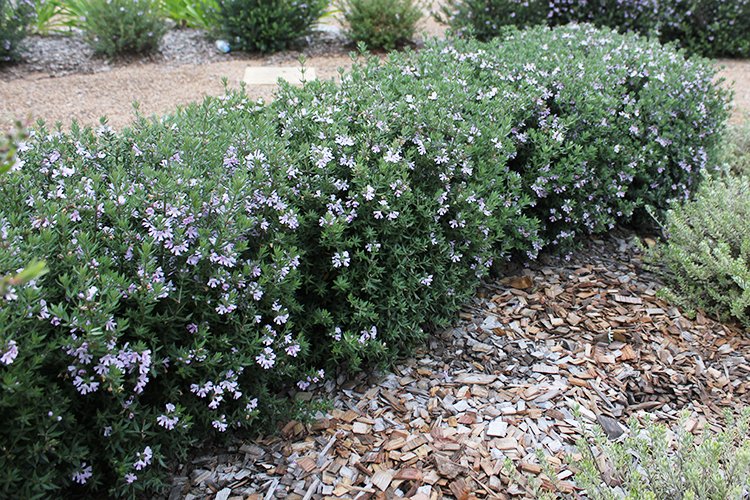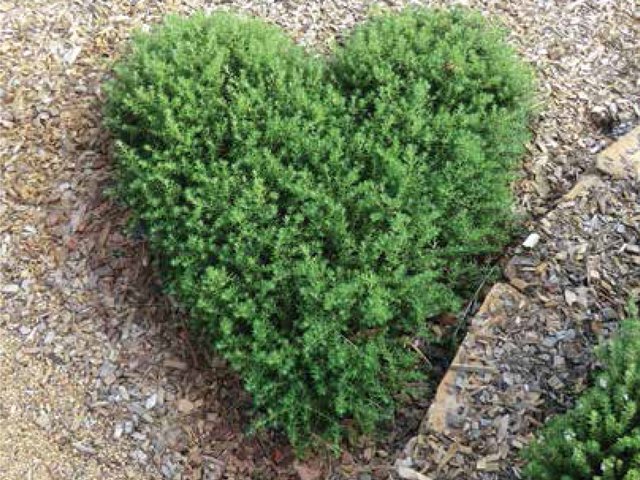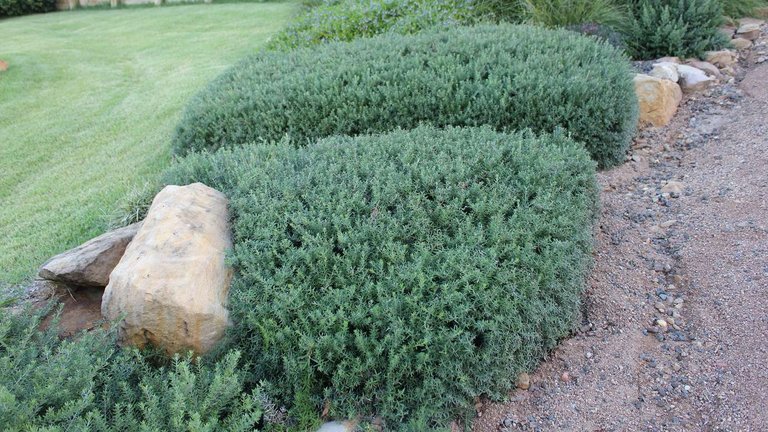Westringia fruticosa 'Morning Light' (Coast Rosemary) - A small compact shrub which grows to 3 to 4 feet tall by 4 to 5 feet wide. The tightly crowded linear leaves have a cream colored variegation along the margins. The flowering period for the species Westringia fruticosa can be year round in coastal gardens but this plant is a bit more shy to bloom and flowers are typically only seen in spring – a good thing as the showiest aspect of this plant is the clean variegated foliage.

The small white flowers are the same as those of Westringia fruticosa. Plant in full sun or in bright filtered light. Will tolerate moderately dry growing conditions but looks best with some late spring and summer irrigation and can also be used in well-drained moist soils. Hardy to about 20° F – we lost our first garden planting of this cultivar in the disastrous freeze of December 1990, when we experienced several nights at or below 20° F. The species is native to the coast of New South Wales where it can be seen hugging the cliffs and growing near the sand on the beach.

The name for the genus was given to it by Sir James Edward Smith, an English botanist and founder of the Linnaean Society in 1788. The name honors Dr. Johan Peter Westring (1753-1833), a botanist and physician to King Charles XIII of Sweden who was a student of Linnaeus. The specific epithet comes from the Latin word 'frutico' meaning "to put forth shoots" or "become bushy", likely in reference to the dense bushiness of this species. This origins of this cultivar are not known but it was noted in 1981 as growing in a nursery in Canberra, Australia. We received our plants from Kathy Musial at the Huntington Botanic Garden and have been growing it since 1990. We also grow the species Westringia fruticosa and another variegated cultivar Westringia fruticosa 'Smokey' and the low growing Westringia fruticosa Mundi as well as the hybrids Westringia 'Wynyabbie Gem', Westringia 'Wynyabbie Highlight' and Westringia Blue Gem.

This description is based on our research and observations made of this plant as it grows in our nursery, in the nursery garden and in other gardens that we have visited. We also try to incorporate comments received from others and appreciate getting feedback of any kind from those who have additional information about this plant, particularly if they disagree with what we have written or if they have additional cultural tips that would aid others in growing Westringia fruticosa 'Morning Light'.